The resolution measurement with sinusoidal Siemens stars is applicable to all digital cameras and done within minutes.
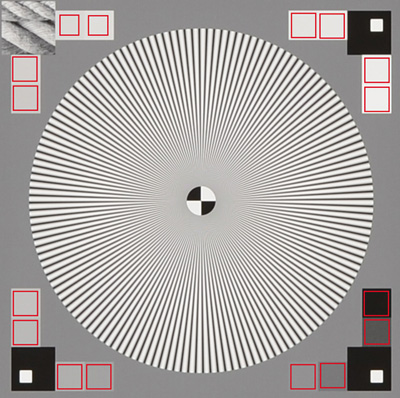
Example: 16 OECF-patches around a Siemens-Star
Linearisation by means of the OECF is obtained as follows
| 1. Measuring the actual OECF The density is measured at each gray patch and applied to an Input / Output-graph. A poly-fit connects the points to a curve. |
2. Inverting the measured OECF The measuring points are converted and again connected by a poly-fit. So you get exactly the inverted curve. |
3. Linearisation By multiplying measured and inverted OECF-curve you get a linear curve |
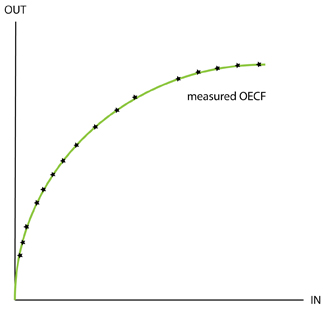 |
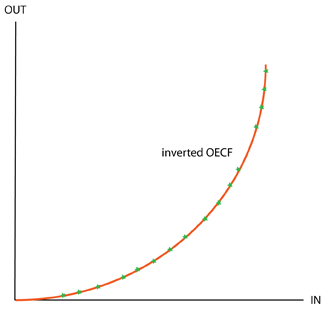 |
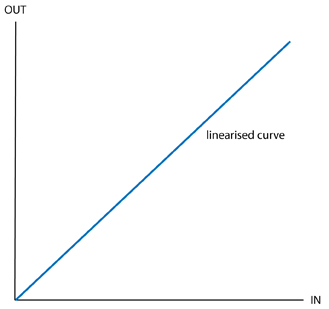 |
| measured OECF | inverted OECF | linear OECF |
The linearised data can be applied for resolution measurement.
In case of a resolution measurement with a Siemens-Star, the modulation in the low frequencies (those are the white and black patch right to the star) has to be 1. With higher frequencies it decreases and goes down to 0, where no linepairs can be resolved anymore. The modulation is calculated as follows:
So you can see that it is neccessary to have Imin = 0, otherwise the modulation could not get 1. A modulation of 1 can be reached by shifting the OECF-curve. *
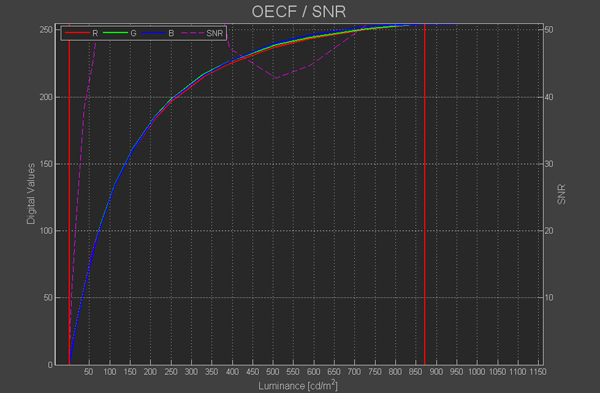
Dynamic Range of a camera
* For detailed information please download our conference paper »
cs